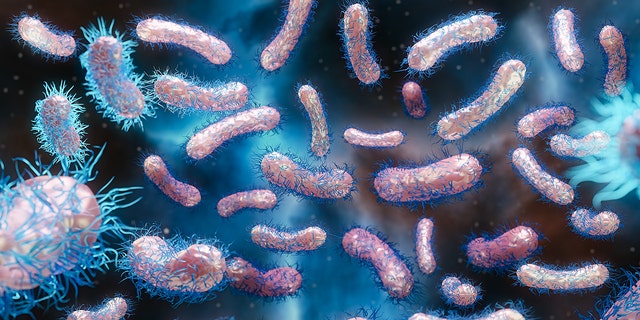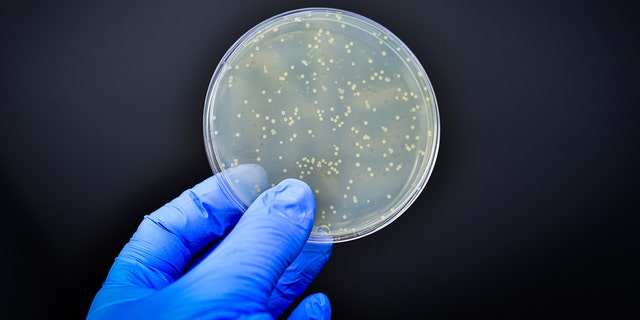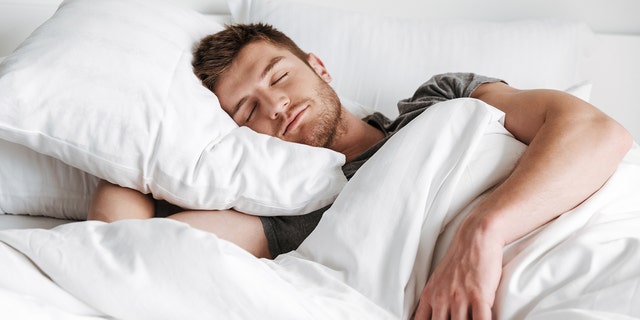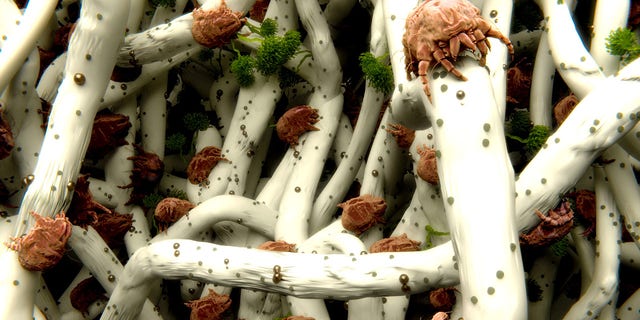Monsters under the bed aren’t the only bedtime horrors to worry about.
Sheets and pillowcases may actually be embedded with bacteria, according to a new study by Amerisleep, a mattress company in Scottsdale, Arizona.
Unwashed bedding could even contain more bacteria than toilet seats after just one week, according to the study findings.
REUSABLE WATER BOTTLES CONTAIN MORE BACTERIA THAN TOILET SEATS DO, SAYS STUDY
During the study, volunteers swabbed their own sheets over a period of four weeks without washing them.
The company also took bacteria samples from mattresses that were anywhere from less than a year old to 7 years old.
After just one week, the pillowcases sampled had at least three million colony-forming units (CFUs) per square inch – 17,442 times more bacteria than a toilet seat (172 CFUs).
After four weeks, the number of CFUs jumped to 11.96 million, which is 39 times more bacteria than a pet food bowl contains (306,000 CFUs).
SLEEP DEPRIVATION COULD REDUCE VACCINE ANTIBODIES, NEW STUDY FOUND
Sheets, on the other hand, collected about five million CFUs in one week, which is 24,631 times more bacteria than bathroom doorknobs (203 CFUs).
After four weeks, the bedsheet samples contained 11.32 million CFUs – more than five times more bacteria than a toothbrush holder.

The most common bacteria found in bedding was gram-negative rods, which made up more than 41% of what was identified on sheets and pillowcases.
Gram-negative rods can be dangerous and could lead to antibiotic resistance, according to CDC data.
POPULAR CONTACT LENSES COULD CONTAIN TOXIC ‘FOREVER CHEMICALS,’ NEW STUDY FINDS
The other two common bacteria found were gram-positive rods (24.94%) and bacilli (23.38%), which are usually the culprits behind food poisoning and similar infections, Amerisleep noted in its findings.
A mattress that’s less than a year old contains three million CFUs per square inch, the study found.

After seven years, the bacteria had grown to more than 16 million CFUs per square inch of mattress.
Mattresses that were less than a year old showed an equal number of gram-negative rods, gram-positive rods and gram-positive cocci for all bacteria identified.
INFECTIONS FROM POTENTIALLY DEADLY BACTERIA IN BABY FORMULA ADDED TO CDC WATCHLIST
The most common bacteria found on 7-year-old mattresses were gram-negative rods (37.36%). Mattresses of that age were the only ones to show all four types of bacteria.
In light of these findings, bedding should be washed once every seven days, said Amerisleep.
The maximum number of days sheets can go without being changed before being considered “gross” is 35 days, according to the company.

By 35 days, bedsheets will have accumulated more than 30 grams of dead skin cells, two gallons of body fluids like sweat and saliva, and more than one million dust mites.
Failure to wash sheets regularly can result in allergy symptoms like runny nose, coughing, sneezing, itchy skin and watery eyes.
WANT TO BE A MORNING PERSON? THESE 6 EXPERT TIPS MAY GET YOU THERE
“Washing sheets regularly is not only good hygiene, but it may also improve your sleep quality,” Amerisleep states on its website.
“More people feel excited about going to bed on fresh sheets,” the company added.
“Clean bedsheets invite sleep, which serves to boost your sleep quality.”
Fox News contributor Nicole Saphier, M.D., who studied microbiology as an undergraduate, emphasized the health concerns around sleeping on dirty sheets in a conversation with Fox News Digital.
“Conditions as benign as irritated skin, and rashes to more serious conditions, like acne, ringworm, and even pneumonia have all been associated with sleeping on dirty sheets,” she said.
“Our body comes into contact with many pathogens all throughout the day and of course, when we go to sleep, those pathogens transfer to our sheets.”
In addition to pathogens, Saphier explained that dirt, oil and other substances can “really build up and affect the immune system.”
“Washing sheets regularly is not only good hygiene, but it may also improve your sleep quality.”
Saphier suggested taking a shower prior to getting into bed, adding that drying wet hair before hitting the hay will prevent wetness on pillowcases from breeding pathogens, too.
“Also, be sure to wash your sheets at least once a week,” she said. “Anything longer than that is a bit gross and can lead to some health concerns.”
Washing your sheets weekly is recommended in most cases, per the guidance of WebMD.
Certain bedtime arrangements such as sleeping with pets can become a free-for-all for dust mites, which love to feed on dead skin cells, the site reported.

The average human sheds 500 million skin cells per day, according to WebMD, welcoming dust mites and their droppings into bed which can trigger allergies, asthma and other skin reactions.
If pets share the bed, they can spread such infections as mange or ringworm, which can cause skin reactions in humans, too.
Dirty pillowcases can also be the culprit for acne breakouts due to embedded dirt, dead skin and bacteria which can clog pores, WebMD reported.
CLICK HERE TO SIGN UP FOR OUR HEALTH NEWSLETTER
For bad breakouts, the health site suggested changing pillowcases every two to three days.
If you’re sick, bedding should be thrown into the wash immediately to kill lingering germs, WebMD said, since some bacteria and viruses can survive longer than others.

Other factors that can add to gross stuff between the sheets include sleeping in the nude, snacking in bed, sleeping with kids or excessive sweating at night.
WebMD advised allowing your sheets to breathe in the morning, instead of making the bed right away, to allow covers a chance to dry and attract less bacteria.
The site also suggested washing bedding in hot water, if the care label allows, and using the dryer to kill any remaining germs that may have survived the wash cycle.
Color-safe bleach can also be used as an extra germ-killer on bedding, especially when cleaning up after an illness.
Read the full article here